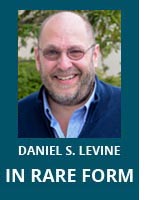 Maeve Sheehy fell asleep as a teenager and woke up as an adult.
Maeve Sheehy fell asleep as a teenager and woke up as an adult.
Sheehy began nodding off in classes at the age of 13 when she started middle school. She’d have to go home and teach herself the material she had slept through in class each day. Sheehy remembers teachers and her parents at first dismissing the problem as something common in teenage years and said that she just needed to get more sleep.
Sheehy was constantly exhausted. She would fall asleep in class, in cars, and she even once fell asleep while tying her shoe. There were other problems too. She could no longer sit and read for extended periods without falling asleep. If she had a hearty laugh, felt anxious, or had intense feelings, her knees would start to buckle and she had problems staying on her feet.
When her parents soon came to understand there was more going on than late nights and puberty, they began seeking medical help. Doctors considered genetic conditions, depression, and other psychological disorders. Later, when a pediatrician suspected sleep apnea, she ordered a sleep study and Sheehy at the age of 15 was diagnosed with narcolepsy with cataplexy.
“It was very much a relief to be finally diagnosed and affirmed that I wasn’t crazy,” said Sheehy. “There wasn’t something wrong with my head. I wasn’t just making this up. There was something physically wrong with me that could be pinpointed and explained to adults.”
Sheehy had actually diagnosed herself early on by Googling her symptoms, but the diagnosis was dismissed by her parents, both medical professionals, who knew how rare the condition is. Narcolepsy affects about 1 in 2,000 people.
Narcolepsy is a disorder characterized by excessive sleepiness, sleep paralysis, and hallucinations, according to the National Sleep Foundation. People with the condition often have cataplexy, which involves the loss of muscle control that is triggered by strong emotional responses.
People who have narcolepsy with cataplexy have a deficiency of hypocretin, a neurotransmitter that plays a role in the regulation of sleep and wakefulness and is produced by a cluster of cells in the portion of the brain known as the hypothalamus. In the absence of adequate amounts of hypocretin, a person has disruptions to their sleep cycles and difficulty staying awake.
Most people take up between an hour and an hour-and-a-half to reach REM sleep, the deepest portion of the sleep cycle. People with narcolepsy don’t move gradually between wakefulness and REM sleep. For Sheehy, rather than moving on a gradual curve toward REM sleep, it takes her about 15 minutes to get there.
REM sleep is not restful. In fact, the brain is quite active during this part of the sleep cycle. During REM sleep the muscles are temporarily paralyzed except for the heart and diaphragm, and the brain is busy storing long-term memories and doing other maintenance work.
Now at 17, Sheehy is a Junior in high school in Natick, Massachusetts, a suburb about 25 miles east of Boston. Her diagnosis, however, was only a beginning. It was followed with a period of trial and error with medications including stimulants during the day to help her stay awake, sedatives at night to extend the sleep curve, and selective serotonin reuptake inhibitors, a class of antidepressants that have the effect of suppressing REM sleep.
Sheehy says she feels like she’s skipped over the teenage experience and had to start playing adult early. She’s learned to advocate for herself with teachers, with doctors, and has felt the weight of having to consider what her condition would mean to her future as she thinks about things, such as college and careers.
But her condition has also opened new worlds to her. She has connected with an online community of people who have helped her see her condition doesn’t have to limit her future.
“It affects your whole life, but it doesn’t have to be your whole life. There are ways that you can manage it,” she said. “You can still go out and do things. It’s by no means easy, but it is doable.”
As a student with a disability, she has been able to get needed accommodations at school because she can sometime enter foggy states and need to lie down. And, she has gone public about her condition as an advocate.
“I spend about 50 percent of the time trying to pretend my condition doesn’t exist,” she said, “and spend the other 50 percent of the time trying to convince people that it does.”
Sheehy delivered a TEDx Talk in January 2017 in her hometown, and since then has spoken at the Sleep2 conference in Boston, and the International Pediatric Sleep Conference in Florida.
There was one other change that followed her diagnosis. Because her father is a physician’s assistant and her mother is a nurse, when people asked Sheehy if she wanted to go into medicine, she had a reflexive response.
“For a long time, my answer was “no,” and then I found out I had narcolepsy and that my brain was doing all of these weird and cool things,” she said. “Now I’m totally focused on becoming a neurologist and specializing in sleep medicine.”
March 27, 2018

Stay Connected
Sign up for updates straight to your inbox.
